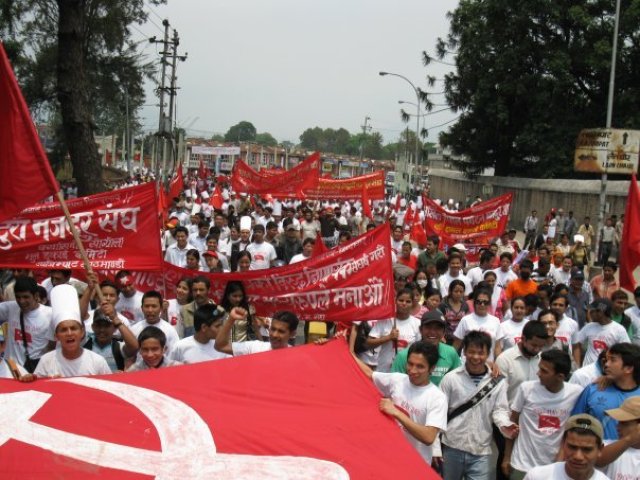
The sixth plenum of the Unified Communist Party of Nepal (Maoist — UCPN(M)) began on November 20 in Gorka District. It was the largest meeting in the party’s history; more then 7000 local members are taking part in discussions.
The Nepalese revolution is in a state of limbo. The current government resigned in May, but continues in a caretaker fashion, as no alternative has come forward.
The Constituent Assembly was extended for 12 months when its tenure expired in June. But little progress has been made on finalising a new constitution, with bitter divisions between the revolutionary UCPN(M) on one had and the government (a conservative coalition of the Nepali Congress and Communist Party of Nepal (United Marxist-Leninist)) on the other.
A budget has been approved, but only as an interim measure. The military continues to defy the peace process while condemning the Maoist People's Liberation Army in the cantonments (regions).
In this context, the sixth plenum was called by the Maoists to discuss a way forward for the Maoist movement. The debate has proved intense, with three central leaders putting forward different proposals.
There have also been some complaints from the party’s grassroots against some members allegedly involved in corruption and living exorbitant lifestyles.
The debate within the party’s leadership focused on the role of the Constituent Assembly, the role and possibility of new popular uprisings, the role of India and imperialism and the importance of overcoming internal counter-revolutionary forces.
Intense internal debate is not new to the Maoist movement. At various points through the revolutionary process, the Maoists have had very sharp internal struggles, particularly when trying to relate to changes in the political situation.
But the party has come through these periods united and clear about the political tasks it faces. Its internal democratic structures have proven enormously effective in relating to the changing politics throughout Nepal's revolutionary process.
The Maoist party has recently struggled for a coherent political line, so the current discussions come at an opportune time.
The Nepali revolution has achieved much in overthrowing the monarchy and opening the way for the Constituent Assembly, but the struggle is by no means complete.
The old royalist state is largely untouched, the peace process is incomplete and there is no new constitution.
There are many struggles ahead for the people of Nepal if they are to institutionalise the “New Nepal”.